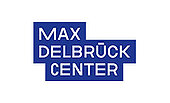Selective iNOS small molecule inhibitors for the prevention of NO-dependent neuroinflammation
Keywords
CNS, iNOS, microglia, NO, stroke, diabetes, retinal degeneration
Invention Novelty
Microglia are immune effector cells of the central nervous system (CNS). Upon activation, microglia produce nitric oxygen (NO) via an NO synthase (iNOS) specific for microglia and macrophages. Inflammatory processes and microglia activation accompany most of the pathophysiological diseases in the CNS and microglial pathology precedes and even drives the development of multiple neurodegenerative conditions. Researchers of MDC established derivates of a known small molecule inhibitor selectively inhibiting iNOS-mediated NO release in microglia which successfully leads to decreased neuroinflammation.
Value Proposition
Microglia are involved in virtually all pathological processes in the CNS. Microglial iNOS-mediated NO release is involved in manifold pathophysiological processes including diabetes, stroke and retinal degeneration. Up to date, available iNOS targeting molecules are either not selective or hold an insufficient pharmacogenetic profile. Thus, these proposed highly selective iNOS inhibitors offer a promising therapeutic approach to dampen neuroinflammation and deriving pathologies.
Technology Description
In a cell-based high-throughput screen (30,000 compounds) commercially available compound C1 was identified as the most promising candidate. Derivatives of C1 possessing novel molecular structure and good Lipinski values were synthesized. In in vitro experiments, the lead compound of the series showed highly specific effects on the iNOS signalling pathway without affecting other NOS. Importantly, the compound had no effect on the phagocytic properties of microglia. In in vivo mouse models, it was confirmed that the compound passes the blood-brain barrier and is found in sufficient concentration in the CNS. In a stroke model (induction of vascular damage by short-term occlusion of a cerebral artery), administration of the compound led to a significant improvement in motor skills (Pole Test and Corner Test). The exact mechanism of iNOS inhibition is currently under investigation. In addition, it is aimed to test the compound in further relevant mouse/rat models of stroke and macular degeneration.
Commercial Opportunity
This opportunity is available for in-licensing. Co-development is highly welcomed.
Development Status
In vitro pharmacological profile; First in vivo (mouse) proof of concept in a stroke model.
Patent Situation
Patents pending in Europe (EP4204087A1) and US (18/023,233) with priority of 2020.
Further Reading
Jordan P, Wolf SA et al.: Small molecule inhibiting microglial nitric oxide release could become a potential treatment for neuroinflammation. PLoS One. 2023 Feb 6;18(2). PMID: 36745631.





